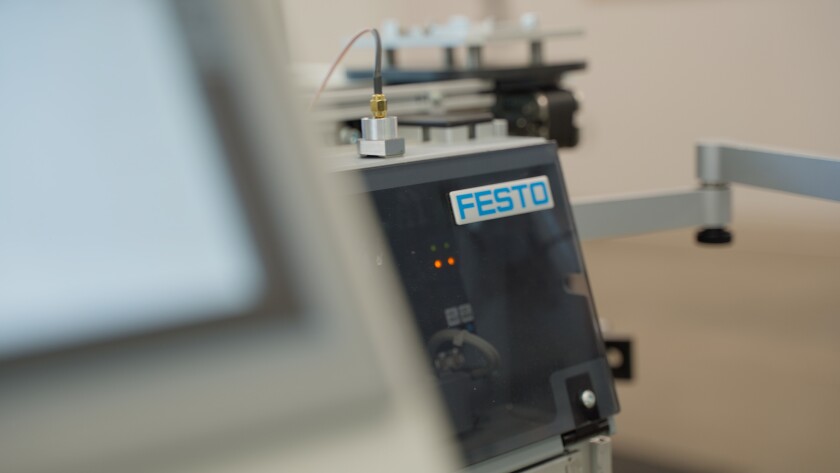FESTO partnered with BYU's Yuri Hovanski to host a training for educators nationwide on augmented reality in the engineering classroom.
Dr. Hovanski, associate professor of mechanical engineering, recently partnered with FESTO Automation Solutions to host an event for invited educators to better use augmented reality in the classroom.
Augmented reality (AR) integrates digital information with the user's environment, allowing the user to interact with both via an AR headset. This technology has been used mostly in entertainment, but has a special use in the classroom.
"We’re always looking for ways to better teach students how to interact and understand the equipment they’re working on," said Jeffrey Erickson, MTECH Automation Technology Coordinator.
Educators at the event explained that AR technology can also be used to demonstrate engineering concepts and machinery that is more difficult to access in-person. Mike Walker, an instructor in the Aviation Maintenance Technician Program at Clover Park Technical College (Washington state), further explained:
“The internal workings that are visible through the AR goggles...allow [students] to understand various functions that they would otherwise not see and cannot see, like a running engine," Walker said.
“I would spend an awful lot of time trying to be as descriptive as possible without giving too much and oversaturating them. Something like this would take care of it in thirty seconds.”

This time-saving sentiment was echoed throughout the conference by Walker's colleagues.
"It's a very low-cost, very low barrier of entry," said Aaron Schellenberg, BYU-Idaho professor of mechanical engineering. "Something that a TA would demonstrate over and over again to each student could in thirty minutes to an hour create a level two experience that could replicate what that TA is doing for the [entire class]."
Hovanski focused the training on what he called "level two experiences" provided by augmented reality. Simply put, level two experiences allow the user to interact with the augmented world around them as if it was part of their own.
FESTO is a global manufacturer of process control and factory automation solutions. In addition to manufacturing, FESTO also has a unique focus on technical education, prompting this collaboration with BYU.
In attendance with interested educators was Ted Rozier, the Director of Engineering at FESTO Didactic. He described the conference as "all about capturing information."
"It's a playground for industry 4.0 methods where students can actually learn to troubleshoot at a higher level," Rozier said.

Faculty in attendance were willing students as they learned more about the potential of augmented reality. The event sparked excitement about the changes coming to engineering education.
“I didn’t realize how simple it was to actually start integrating this kind of learning experience into our curriculum. I plan on starting immediately," Erickson said.
“With augmented reality, [students] can each have their own customized personal experiences in learning that technology," Hovanski said.
Claire Korschinowski, also from Clover Park Technical College as Dean of Instruction, added: “The completion of the task is a learning experience in and of itself. But I can also create a lesson depending on how I deploy the AR.”
The event was also designed to tie into the Department of Manufacturing Engineering's project for BYU's upcoming sesquicentennial Beacons of Light celebration. Following the event, they will work to make this augmented reality technology available through BYU Online for teachers to use.
The technology will save time and money, something that Schellenberg pointed out coming from BYU-Idaho: “Having an augmented reality experience allows us to be frugal and maybe still have the same learning gains.”
Hovanski's targeting of educators at the event emphasized a focus on enhancing education, thus painting augmented reality technology as a positive educational tool.

"Here, we're teaching them how to create that content. That's why we're focused on educators. But ultimately, they want to take that back to their institutions and do this," Hovanski concluded.
